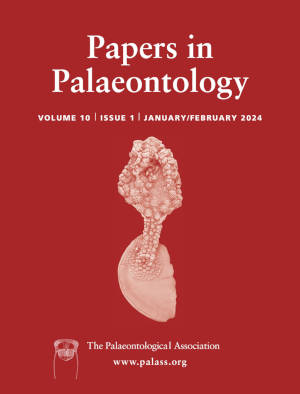Article: First occurrence of family Clavatoraceae (fossil Charophyta) in the Middle Jurassic (Bathonian) of France
Publication: Papers in Palaeontology
Volume:
10
Part:
2
Publication Date:
2024
Article number:
e1548
Author(s):
Khaled Trabelsi, Benjamin Sames, and Carles Martín-Closas
DOI:
10.1002/spp2.1548
Abstract
Abstract A rich and diverse charophyte flora is described from the Bathonian marginal marine beds of southern France. It includes nine species that belong to the families Porocharaceae, Characeae and Clavatoraceae: Porochara gr. fusca, P. gr. kimmeridgensis subgr. kimmeridgensis, P. gr. kimmeridgensis subgr. westerbeckensis, P. gr. kimmeridgensis subgr. douzensis, P. gr. kimmeridgensis subgr. obovata, Auerbachichara saidakovskyi, A. tataouinensis, Aclistochara mädleri and Echinochara cf. peckii. This is the most diverse Middle Jurassic flora reported from France and Laurasia to date, elucidating a turnover in the evolution of charophytes during this time interval. The occurrence of the clavatoracean Echinochara cf. peckii in these Bathonian deposits represents the oldest record of the genus and of the whole family, c. 10 myr older than previous records. This species is considered to be the most basal species in the phylogeny of Clavatoraceae and during its evolutionary history reached a wide biogeographical range in Laurasia. The new Bathonian charophyte assemblage from southern France provides supplementary evidence that the Middle Jurassic was a reactivation pulse in the Mesozoic evolution of charophytes, rather than a stasis as previously thought. Moreover, it provides further support to the hypothesis that during the Late Jurassic and Early Cretaceous the islands of the Cretaceous Tethyan Archipelago represented one of the most active spots of charophyte diversity.
